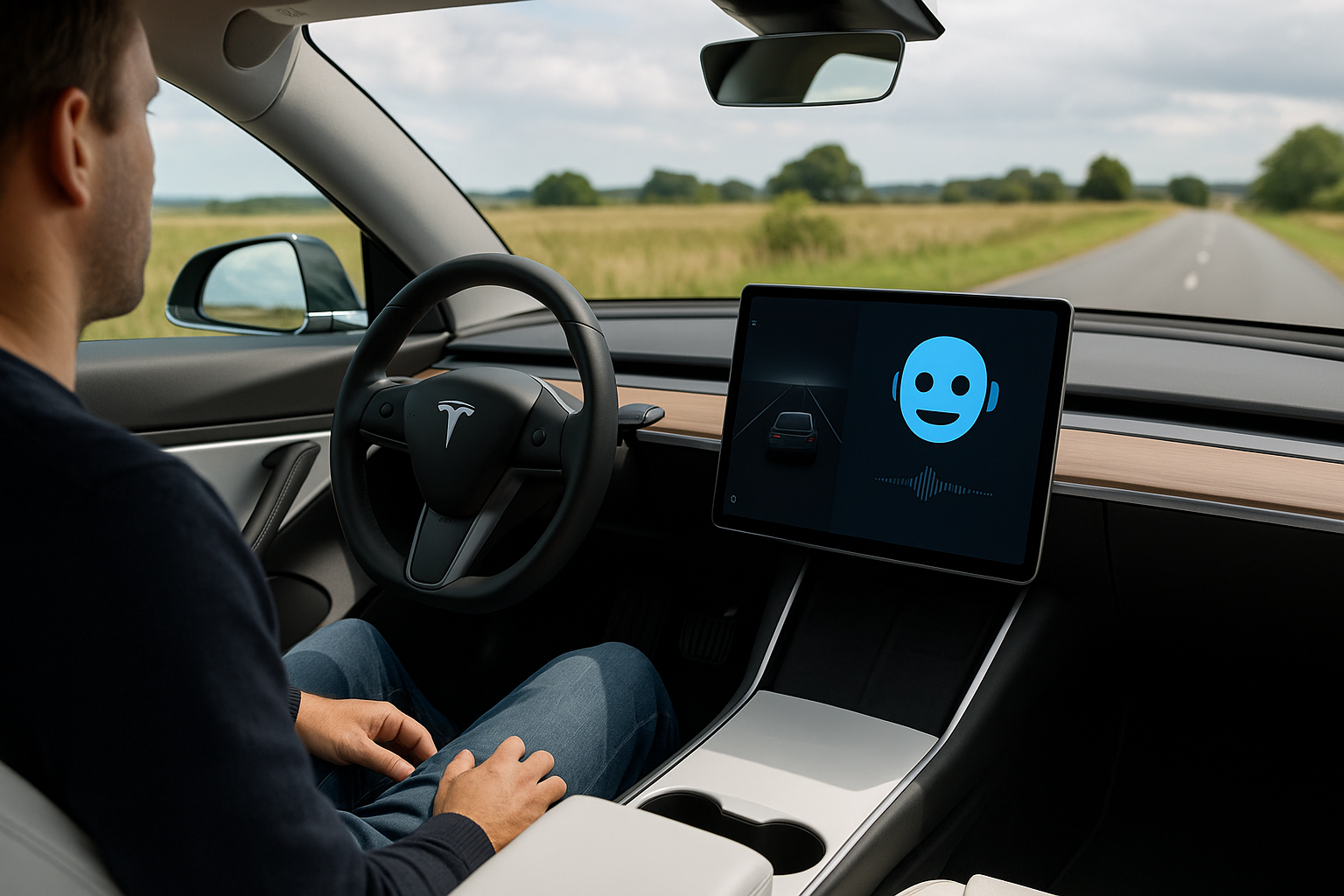Tesla has taken another leap into the future Grok AI is now part of new Tesla vehicles. This major update is more than just another tech gimmick. Elon Musk’s announcement that Grok AI will be integrated into the newest Tesla models has sparked excitement, curiosity, and serious debate. Is this the dawn of truly intelligent vehicles, or just another step in Silicon Valley’s relentless push toward automation?
Let’s dig deep into what this means, how it works, and what real people and experts are saying about Grok AI in Tesla vehicles.
What Is Grok AI and Why Is It in a Car?
Grok AI, developed by xAI and closely tied to Elon Musk’s broader artificial intelligence ambitions, is a conversational AI designed for context rich, witty, and highly interactive exchanges. Imagine ChatGPT with a bit more edge and now it’s being placed in a vehicle where it can interact with drivers in real time.
Unlike traditional voice assistants that perform simple tasks like adjusting the temperature or setting navigation, Grok AI in Tesla vehicles is designed to engage in natural conversations, explain driving behavior, provide news summaries, crack jokes, and even discuss complex topics like philosophy or space exploration.
The Future of AI in Driving
Dr. Sarah Holden, a senior AI researcher at Stanford’s Center for Human Centered AI, noted in a recent interview. Tesla integrating Grok AI is an inflection point in automotive history. We’ve seen driver assist features before, but bringing in a conversational AI that can reason, inform, and even emotionally support the driver that’s new territory.
She emphasizes the significance of emotional intelligence in future vehicles. With Grok, Tesla isn’t just building smarter cars they’re building emotionally aware companions for the road.
A Ride With Grok: Firsthand Experience
John Medina, an early adopter who got his hands on the new Model S with Grok AI integration, shared his experience on X (formerly Twitter), I was skeptical. But the moment Grok started talking about the Mars missions while I was stuck in L.A. traffic, I forgot I was even irritated. It feels like I have a co-pilot who actually thinks and talks like a human.
He added that Grok AI in Tesla vehicles offered not just information but companionship especially during long solo drives.
How Grok AI Works in Tesla Vehicles
Tesla’s onboard hardware, already equipped with neural net processors for Full Self Driving (FSD) features, now also powers Grok AI. The integration allows Grok to do things like. Monitor driver behavior and suggest breaks, Respond to real time road updates with insights, Engage in informative, funny, or empathetic conversation, Act as a teaching tool for Tesla’s complex settings and performance metrics. The goal is to make driving safer, less lonely, and far more engaging.
Enhancing Driver Awareness Through AI
A case study conducted by the Institute for Advanced Automotive UX tested a beta version of Grok AI in Tesla vehicles. The study included 200 Tesla drivers over a two month period. Key findings included. 60% felt less fatigued on long drives with Grok active, 70% claimed they were more aware of Tesla’s features and how to use them, 82% reported increased enjoyment during commutes.
Participants frequently mentioned that Grok’s ability to explain FSD behavior or traffic conditions reduced anxiety and boosted confidence in the vehicle’s decisions.
Elon Musk addressed some of these in a recent Q&A, Grok is there to serve the driver. It can be turned off or customized. It doesn’t store personal data unless explicitly allowed by the user. Transparency in how Grok operates, especially under Tesla’s brand, is key to building long term trust.
Is Grok a Gimmick or a Game Changer?
Whether you see it as a visionary leap or a risky novelty, Grok AI in Tesla vehicles is undeniably a bold experiment. It merges AI companionship with the modern driving experience. Instead of yelling at Siri or awkwardly commanding your GPS, you now get to chat, learn, and maybe even laugh during your drive.
Grok AI in Tesla vehicles isn’t just about voice control it’s about creating a deeper connection between human and machine. As this integration rolls out more widely, expect a shift not just in how we drive, but in how we feel about driving.

